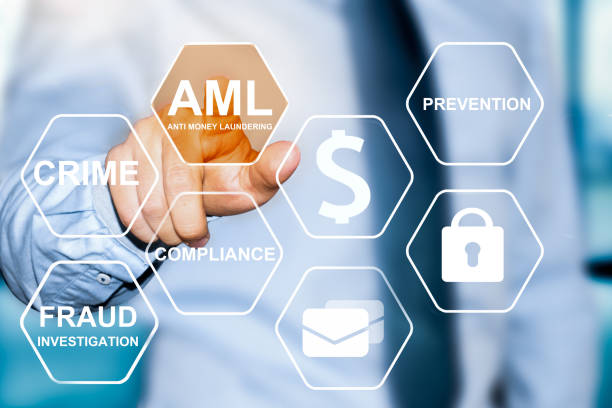AML compliance has introduced a transformative wave in banking operations by reshaping financial institutions to protect against illicit activities. By implementing advanced Anti-Money Laundering (AML) measures, banks have fortified their defenses by detecting financial crimes with enhanced efficiency. This revolution assists in fostering advanced monitoring systems through robust customer due diligence protocols and proactive risk assessment frameworks. The integration of technology-driven solutions has enabled real-time transaction monitoring by flagging suspicious activities and preventing illicit money flows. AML compliance has become the cornerstone of integrity in modern banking by safeguarding institutions and customers from the threats of illegal financial activities.
The study shares the size of the international anti-money laundering software sector in the years 2016 & 2017 and the projected figure for 2023. Experts estimate that by 2023, the revenue from this software worldwide will reach approximately $1.77 billion.
Contents
Understanding AML Compliance
As the world is moving towards advancement and digitalization, financial institutions like banks, credit unions, etc, are facing significant issues of monetary losses such as money laundering and terrorist financing. To ensure integrity and reliability in the system, institutions should follow anti-money laundering compliance programs.
There are varied sets of compliance measures in each country or subcontinent. For example, in the United States, the Bank Secrecy Act (BSA) was used to diagnose money laundering activities in the banks. Later on, it was replaced with the USA Patriot Act. Meanwhile, in Europe, the European Union introduced the anti-money laundering regulations known as Directives which were later on updated with the Fourth AML Directive in 2017 and the Fifth mandate in 2020 with updated rules.
How Does AML Compliance Ensure Integrity in the System?
AML solutions identify unusual activities in financial institutions by actively monitoring the transactions and other related activities of the potential customers and enterprises with which they are operating. AML in banking departments detect illicit doings such as tax fraud, money laundering, and terror funding. It also assists in finding the risk score of the user’s profile before onboarding procedures to mitigate potential risks of money losses. By ensuring AML practices in the businesses, institutes can enhance their integrity with a better approach.
Critical Considerations for Developing an AML Compliance Program
There are specific considerations of the AML systems for complete execution in the system, and these are mentioned below:
Risk Management in AML Compliance
AML compliance is a crucial mandate in assessing the risk score of the users or business profile. There are various factors considered when evaluating those risks, such as the nature of the products the business offers, the associated potential customers, and the geographical nature of the users. The approach of AML risk management should meet the company’s particular requirements.
Internal Controls
AML compliance plays a crucial role in looking out for the internal controls and the system involved in detecting illegal activities. It is executed to ensure the accuracy of the system in the financial institutions and to know if they are meeting the regulatory requirements of the compliance measures. Internal controls are even expanded towards the associated members of the financial institutions so that they are fully aware of their responsibilities in the system and the rules proposed by the authorities. It is being done to mitigate the potential threats of monetary losses such as money laundering and terrorist financing.
The Role of Independent Audits in AML Programs
The external evaluation should be mandated in the system to identify the illegalities happening in the financial institutions. Third-party assessment is executed to make the system more secure and should be carried out every 8-12 months. And the financial institutions operating in high-risk areas should do it more often. The third-party assessment team chosen for evaluation must be qualified enough for high-risk areas.
AML Training
As AML training is given to all employees in financial institutions, some specific workers should know more about their programs as they are involved in projects with AML-based responsibilities. Therefore, a targeted base AML training is required for the complete execution of compliant requirements.
Compliance Officer
There should always be an AML compliance officer at banks and financial institutions to oversee if workers are doing their duties effectively. These compliance officers ensure the execution of relevant policies related to mitigating monetary losses in the system. These programs assist in combating potential threats such as terrorist financing and money laundering.
By ensuring AML practices in the businesses and utilizing infographics, institutes can enhance their integrity with a better approach.
Final Verdict
Real-time monitoring of financial crimes is essential for maintaining integrity and trust within banking institutes. By prioritizing AML compliance measures, institutions can effectively combat the risks associated with money laundering activities. Through ongoing monitoring and regulatory compliance, banks can strengthen their commitment to transparency and accountability. Banking institutes must remain steadfast in maintaining rectitude and combat financial wrongdoing by providing a more secure environment for all stakeholders.
